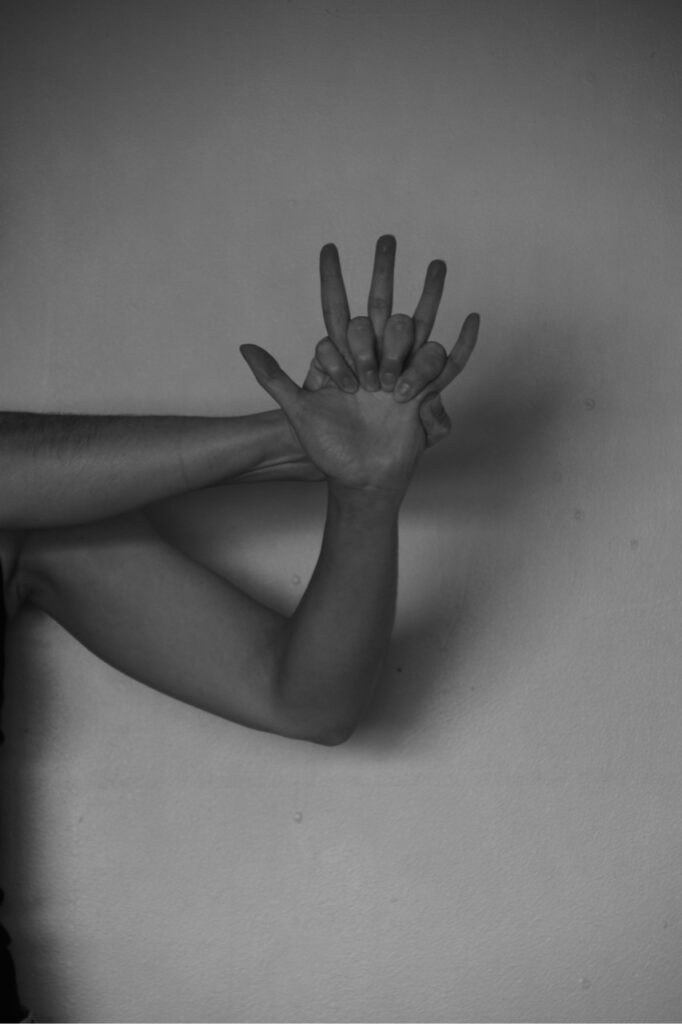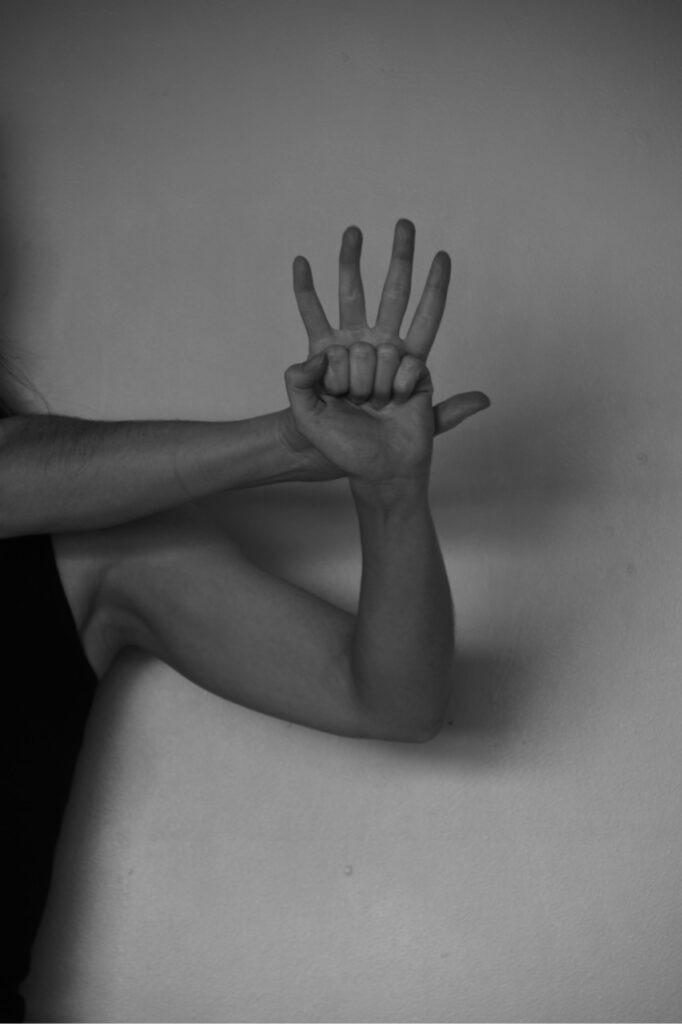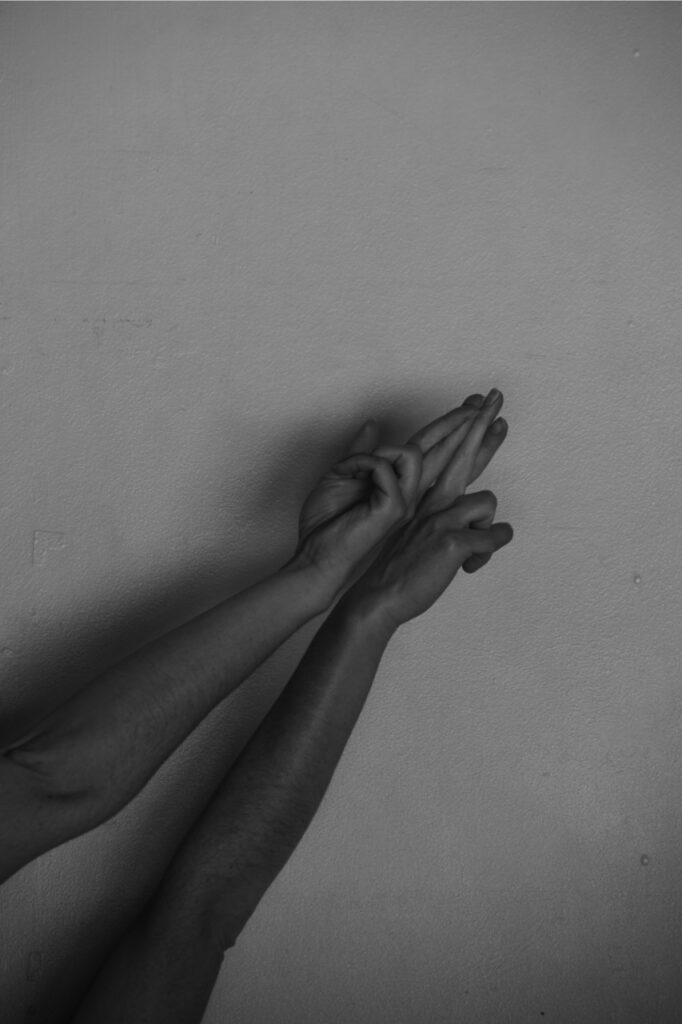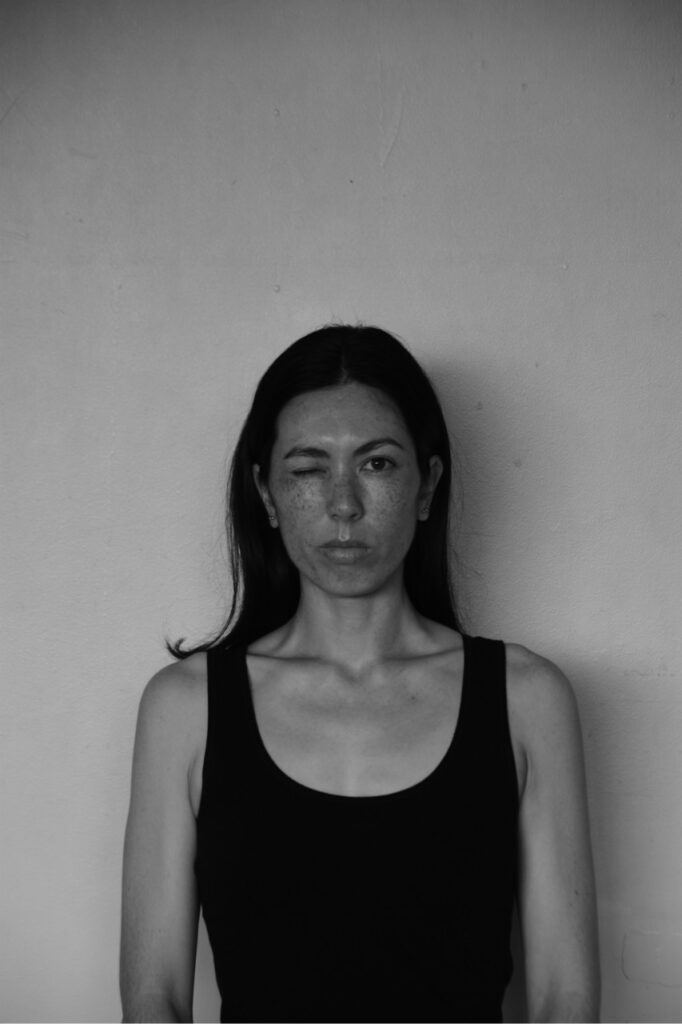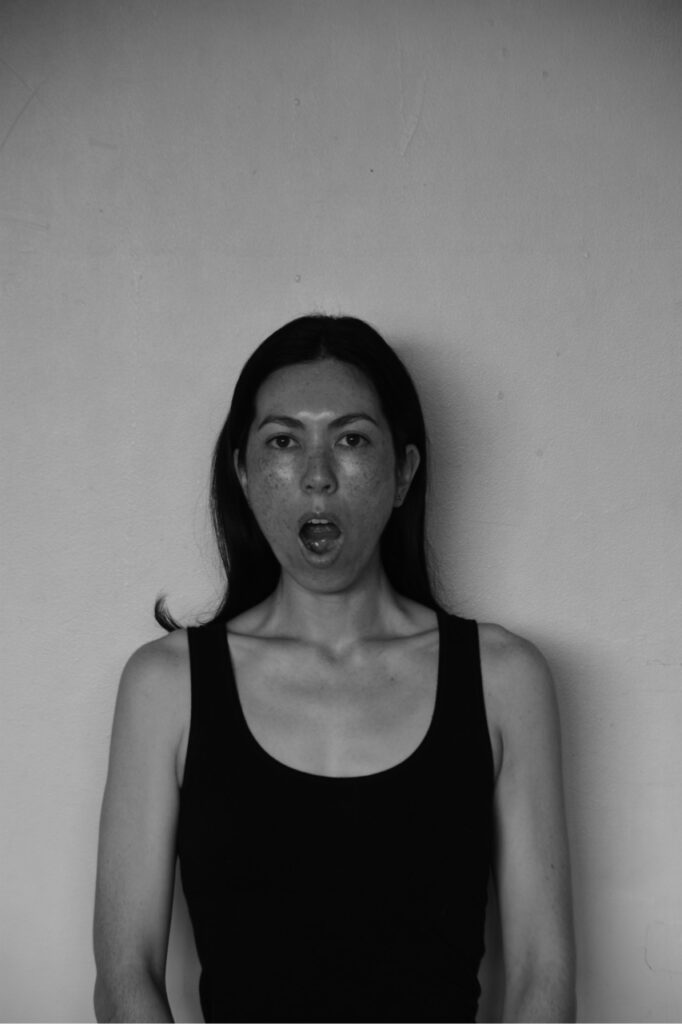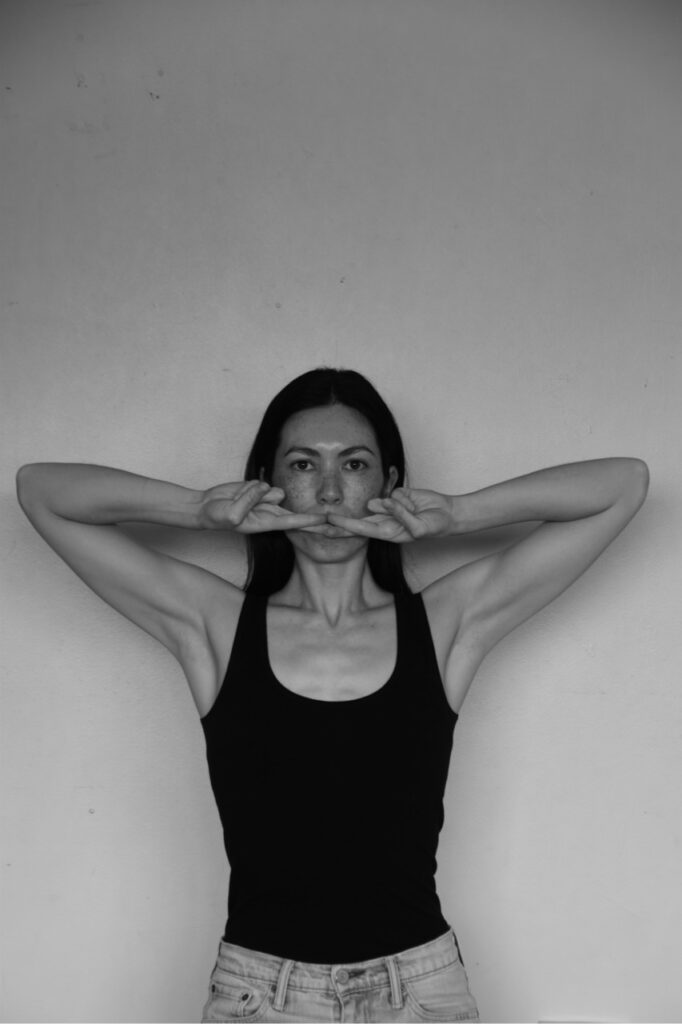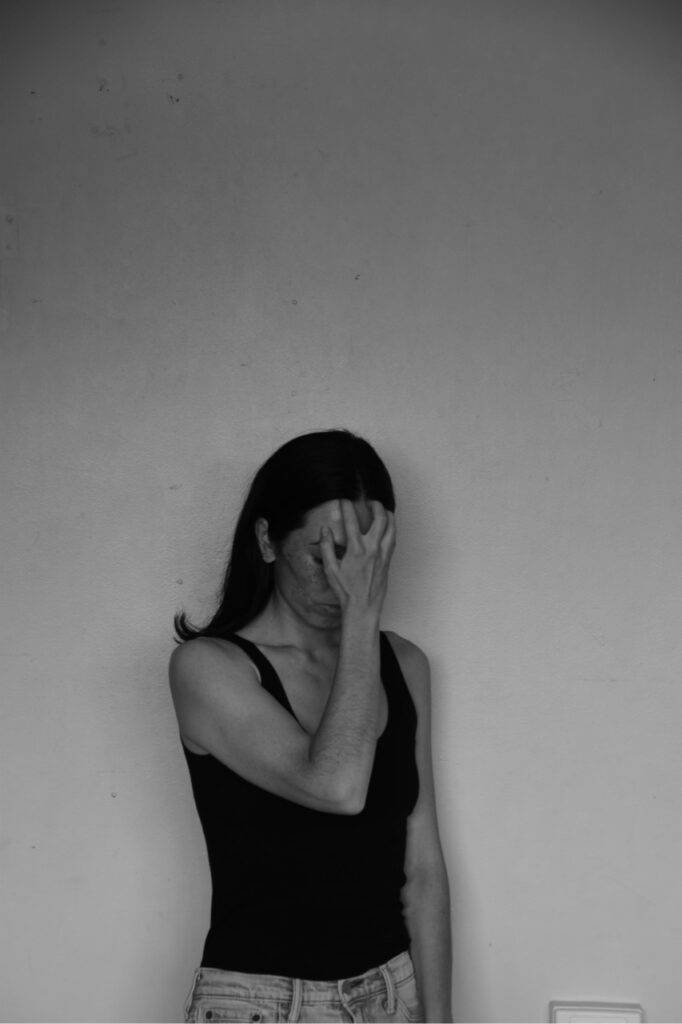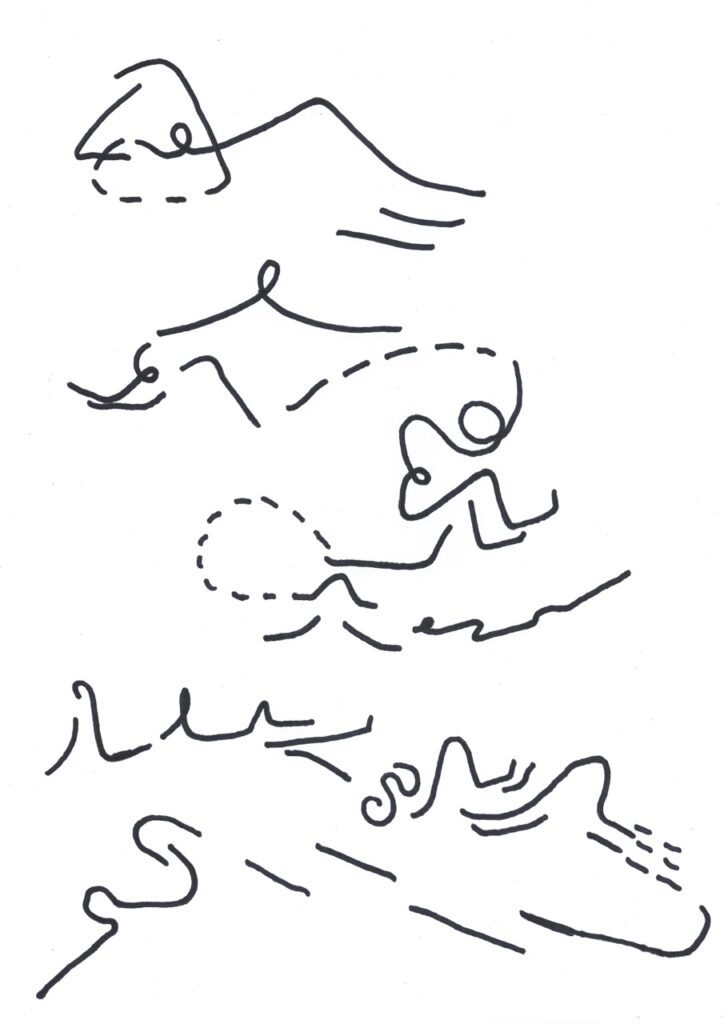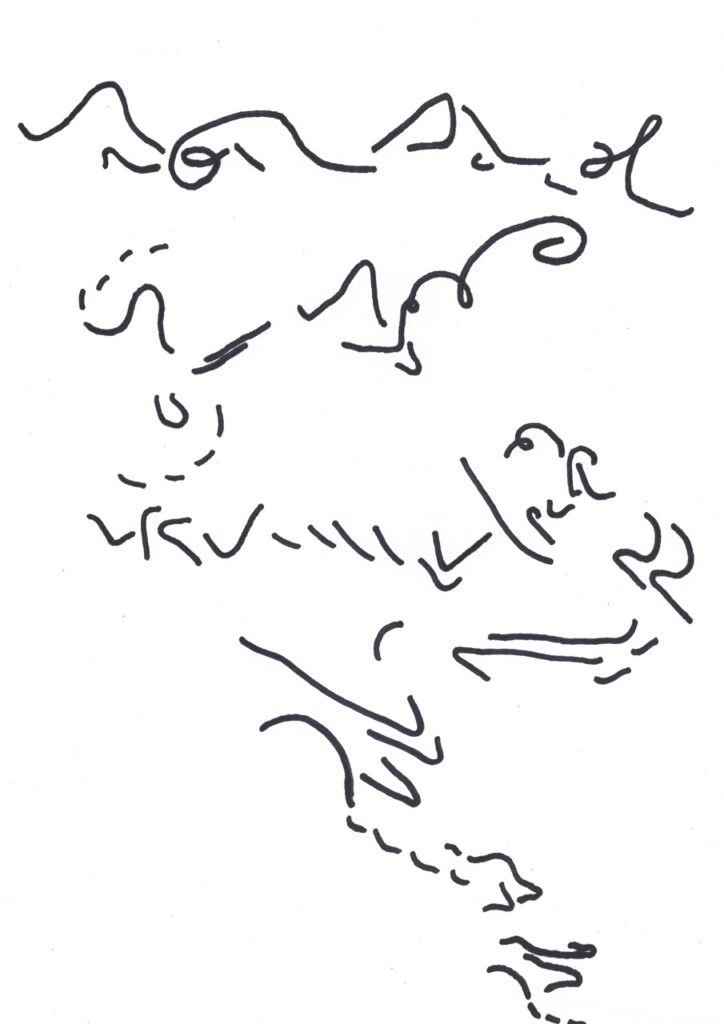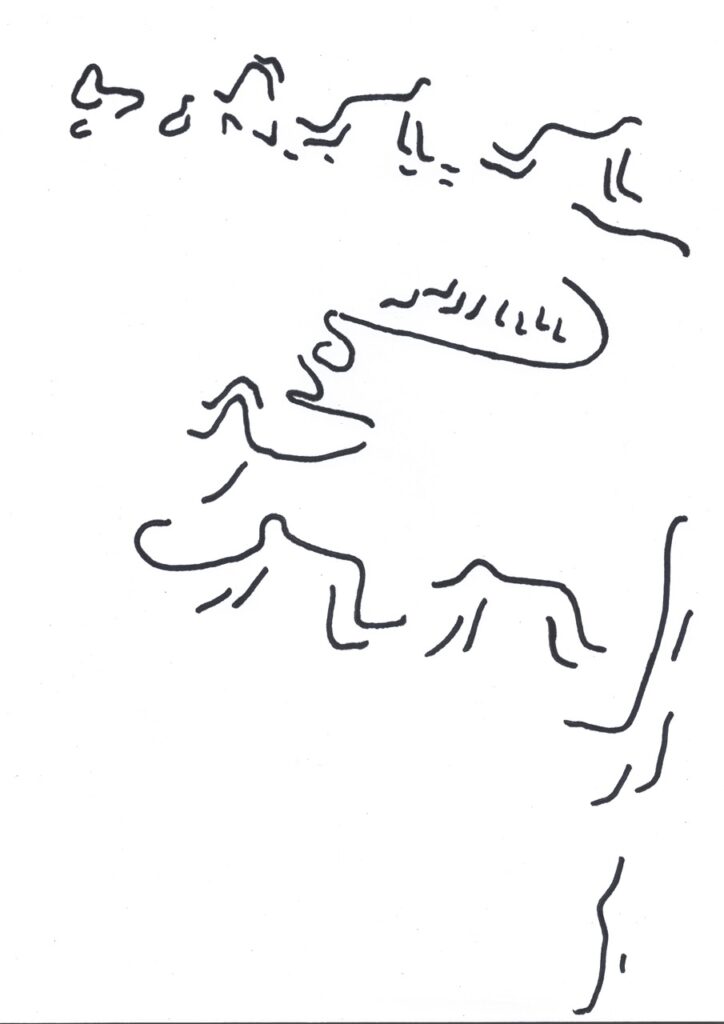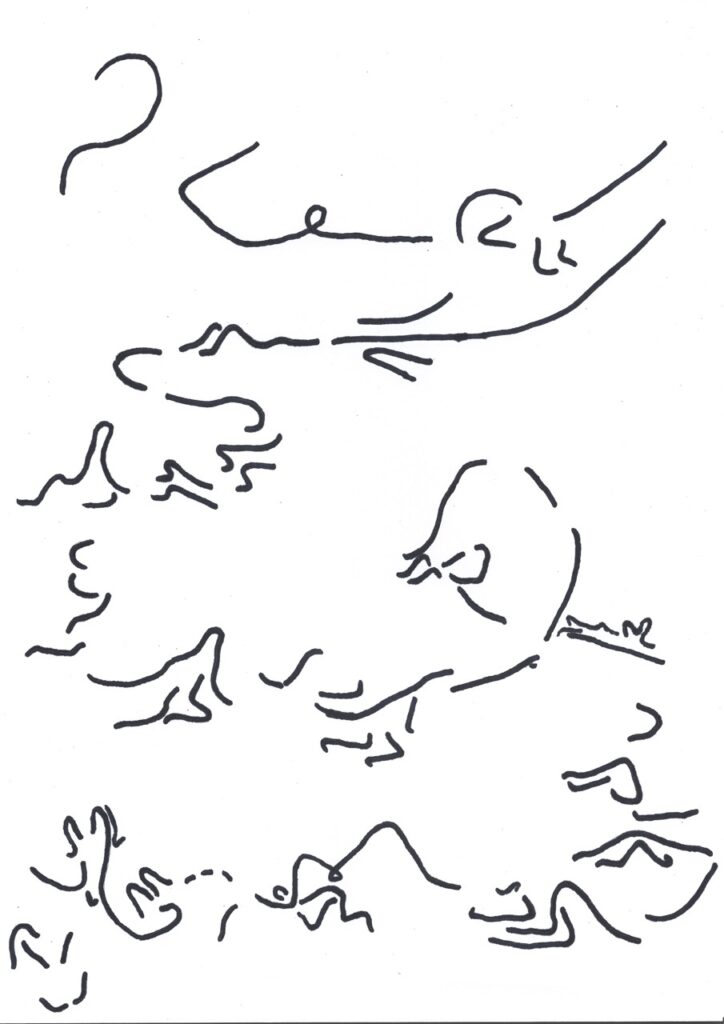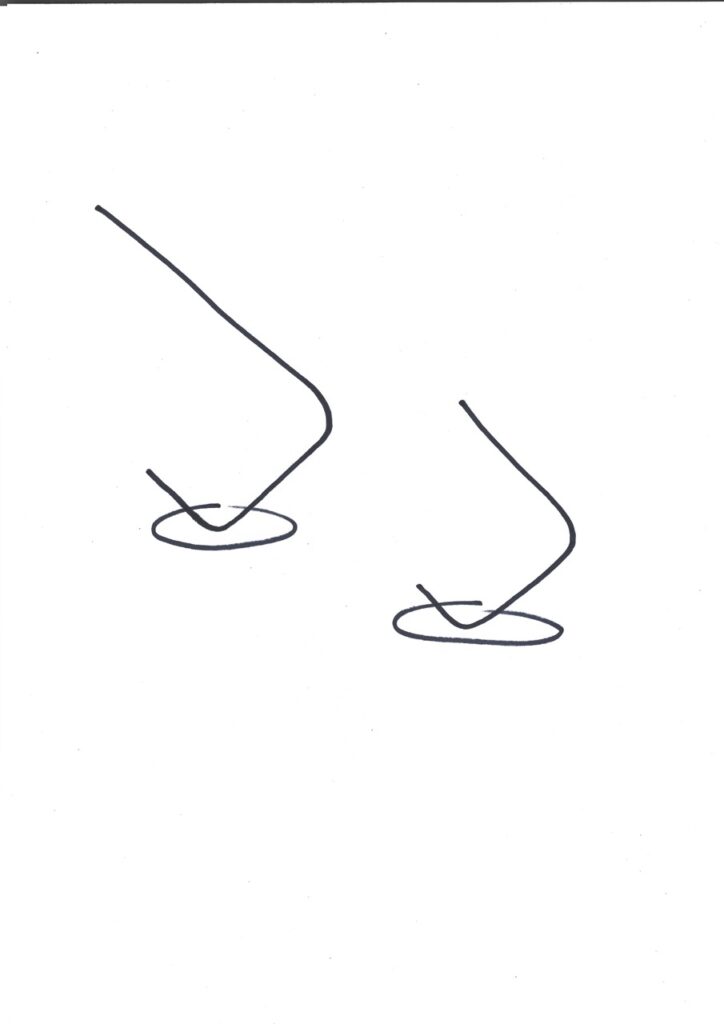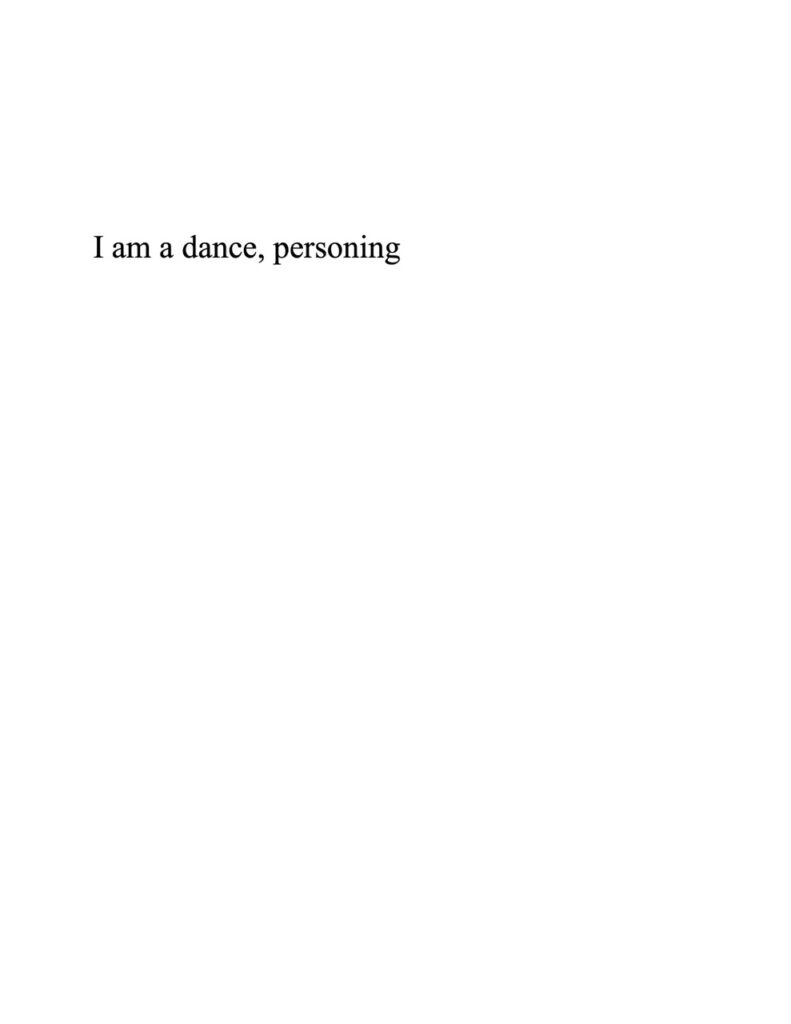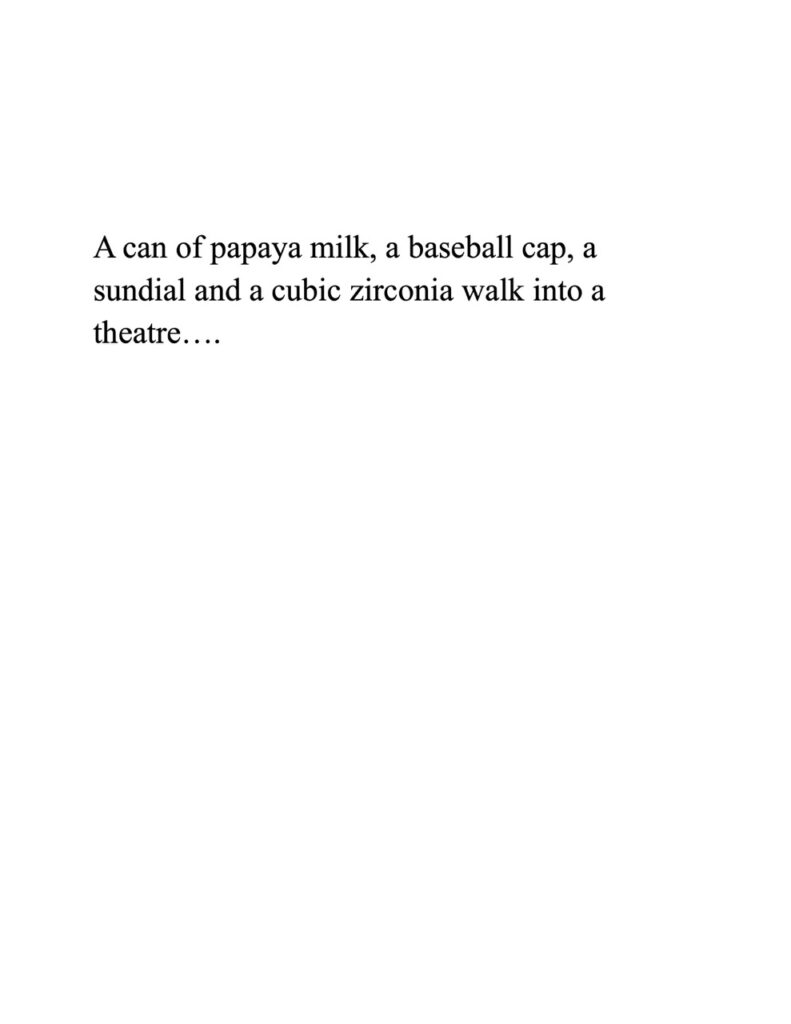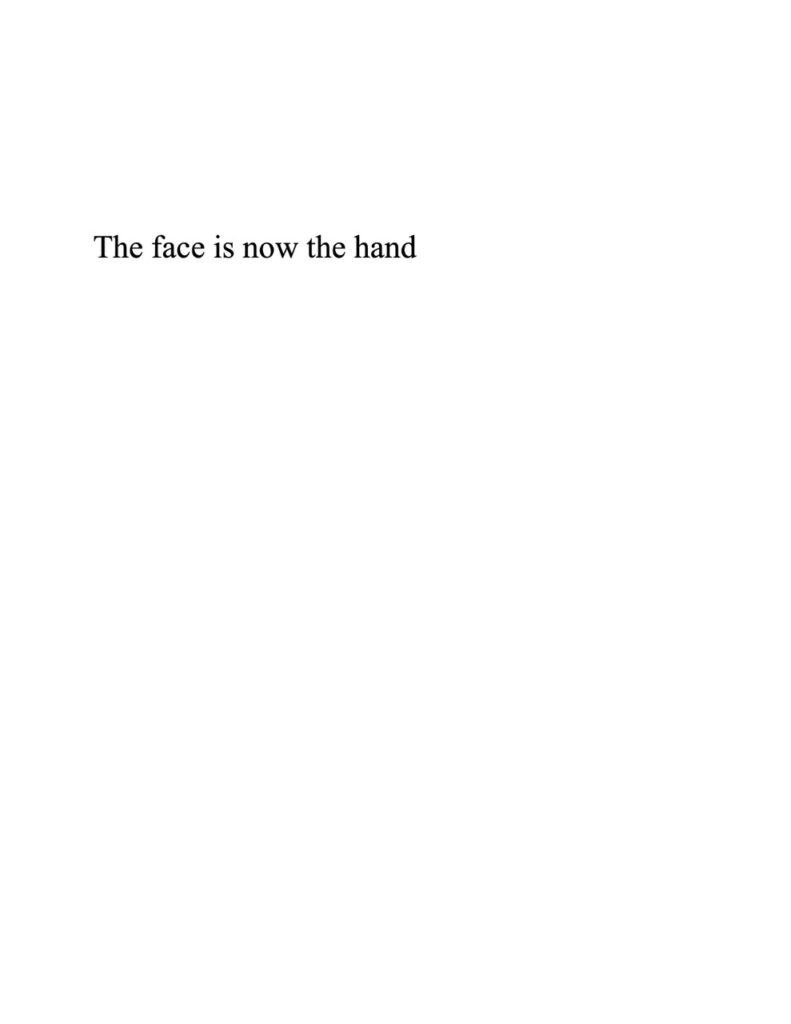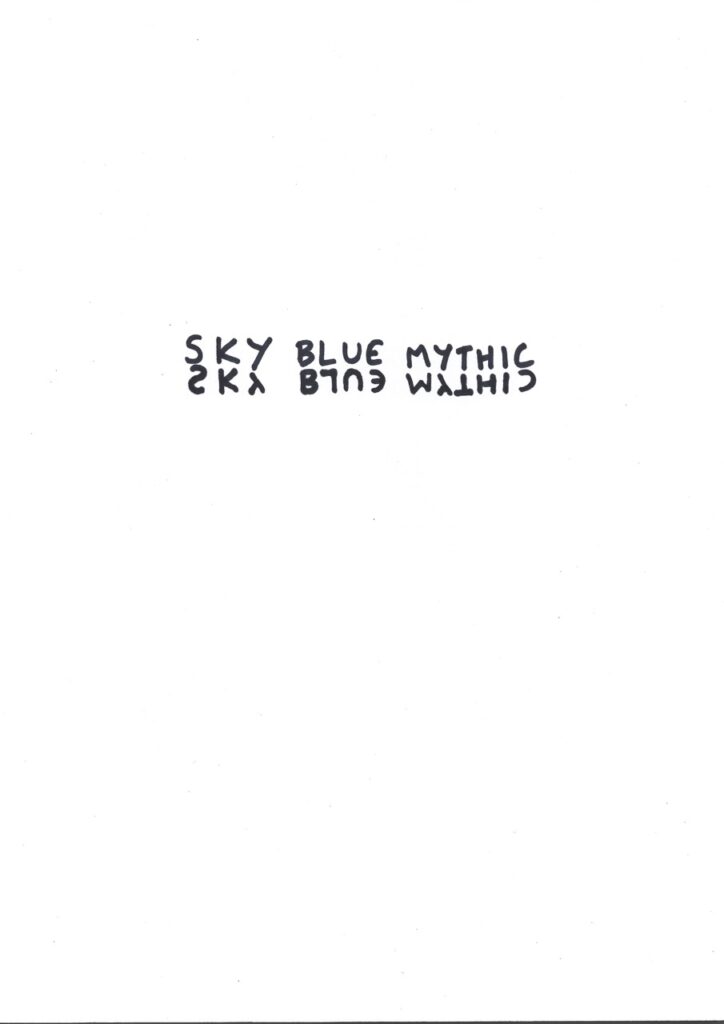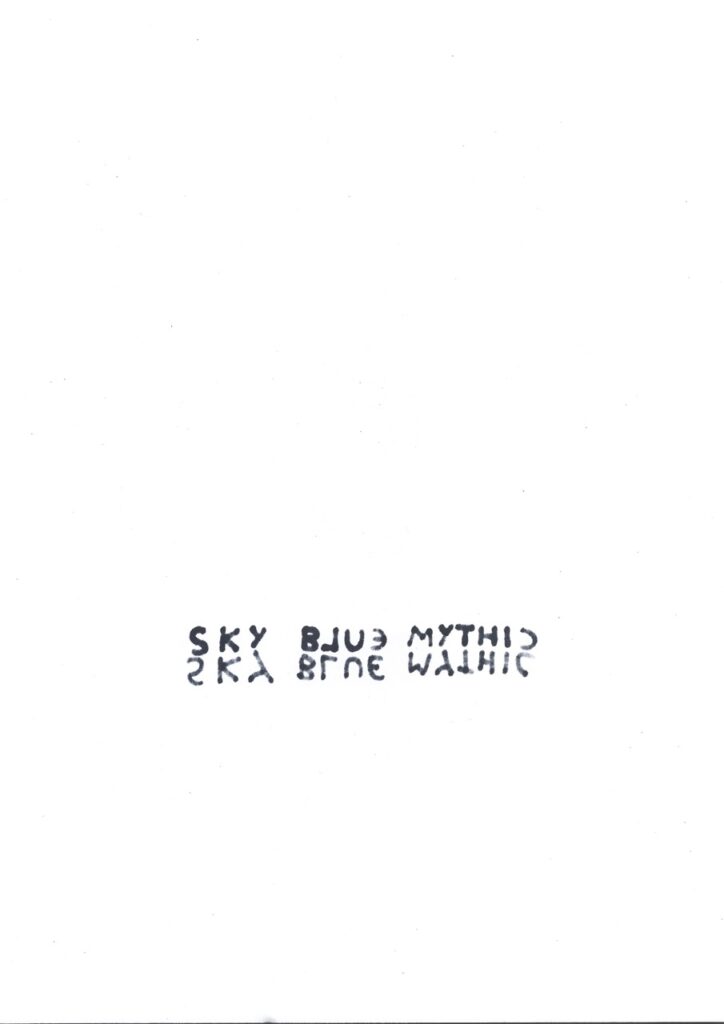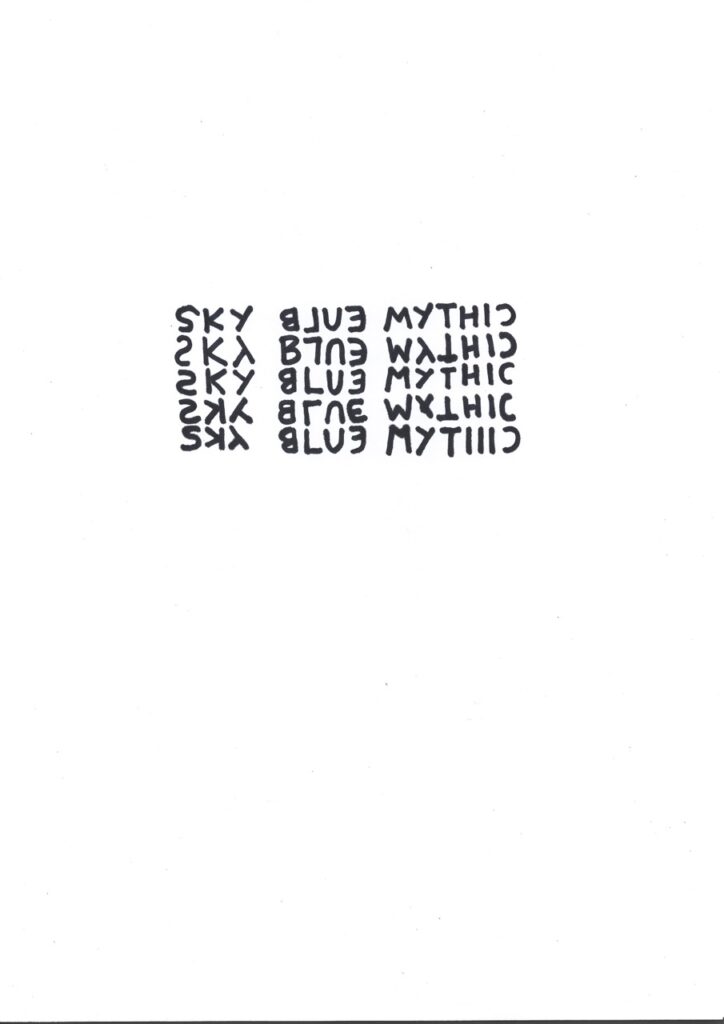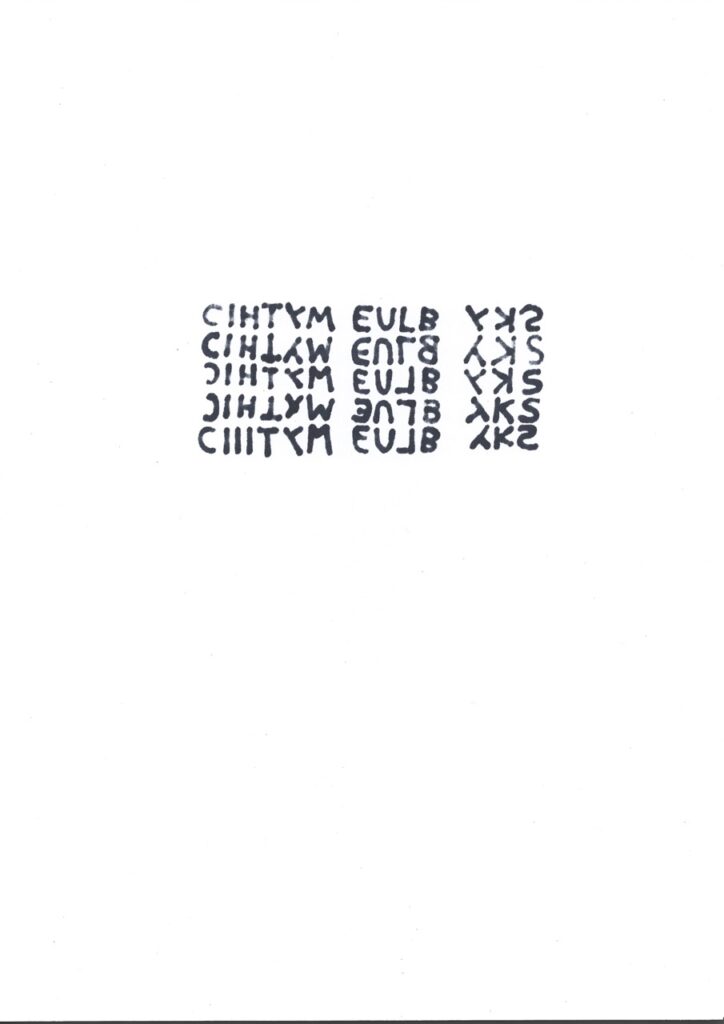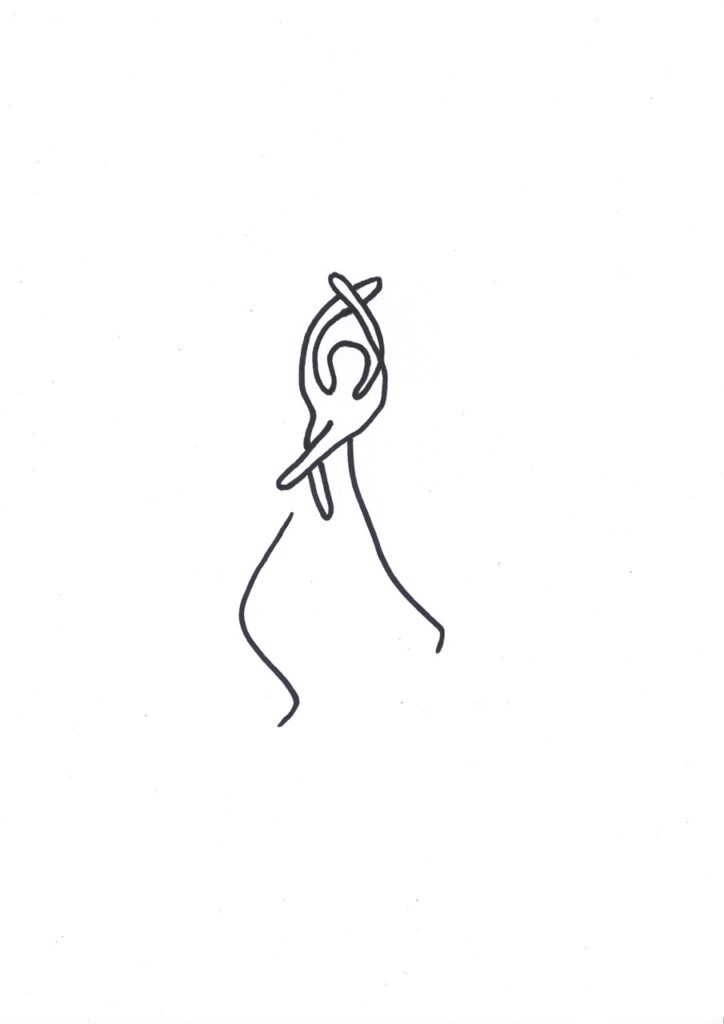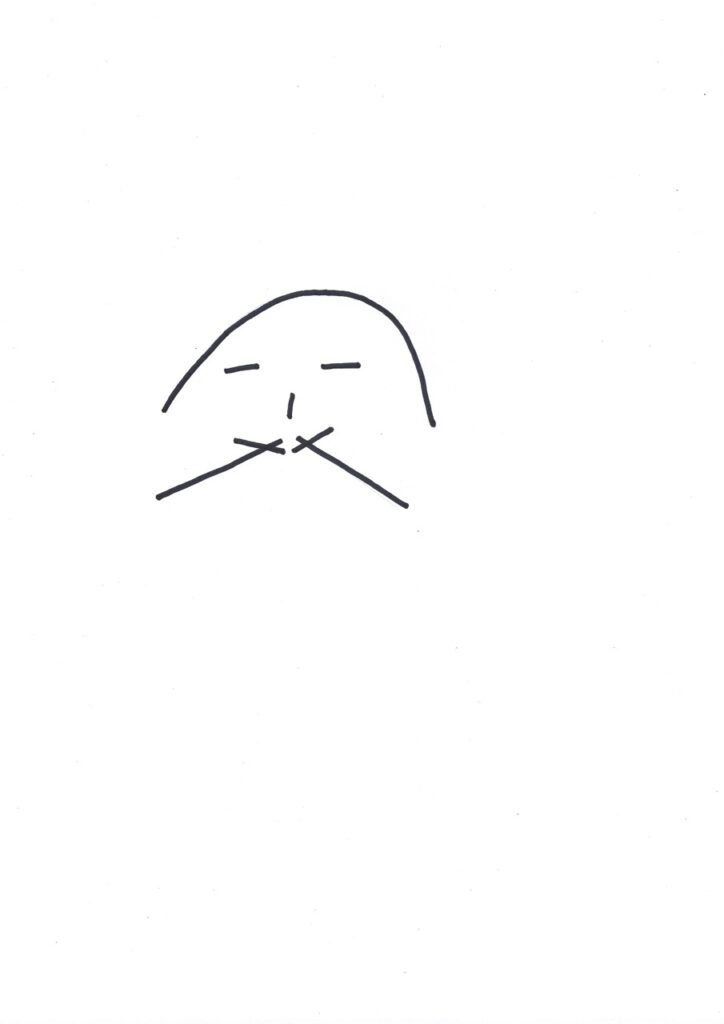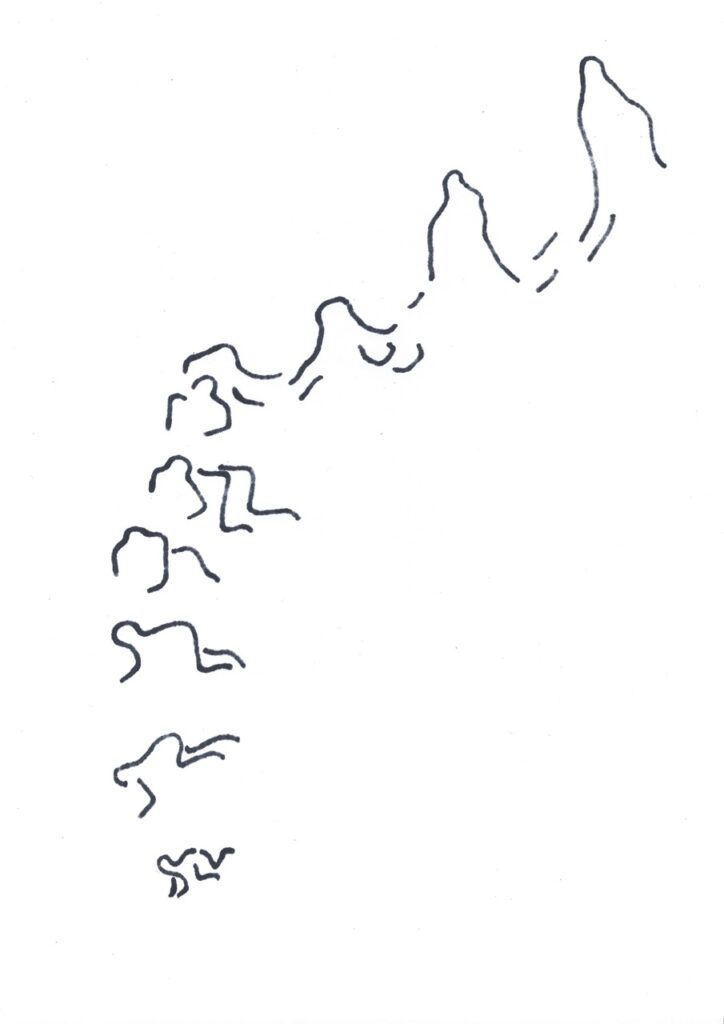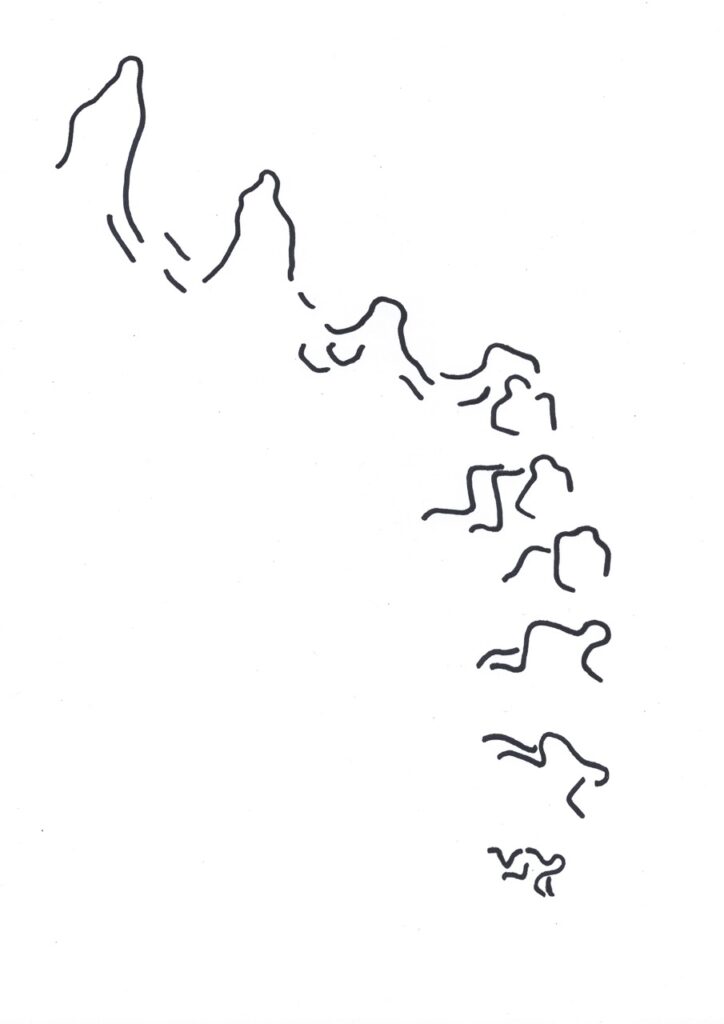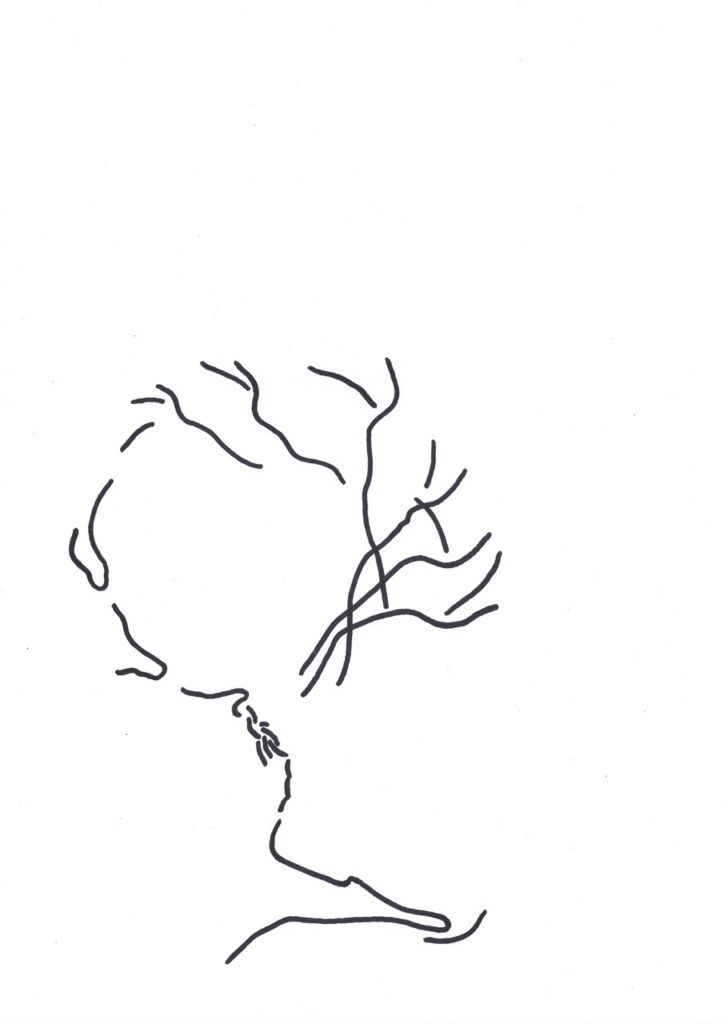GLOSS Inbox
Angela Goh Apr 4, 2022, 1:25 PM to Bree
A can of papaya milk, a baseball cap, a sundial and a cubic zirconia walk into a theatre... We’ve been here before, but it looks different this time. What do you remember?
Bree Richards Apr 12, 2022, 10:03 AM to Angela
I remember the blood moon hovering above the Sydney Opera House, shimmying as reflected light in the harbour. This celestial event, perfectly timed to coincide with the debut of the full-length version of Sky Blue Mythic, makes sense within the context of the world you’ve created for the work. And it lives on now, as a poetic footnote to the story that swirls around this particular performance. I remember being struck, walking into the theatre, by the blinding blank white of the stage, the spareness of the setup interrupted by a single object, a sundial, positioned off to one side. I remember the novel feeling of being in a room, together with other people, for the first time in a long time, gathered together to experience Sky Blue Mythic. I remember being aware of breath, my own and others’, of sharing space. The quiet that rolled through the audience before you came into view, a collective jangling of nerves, excitement, broken by an occasional whispered aside or a cough. But now, nearly a year since I saw your work, twice, the specifics of what you did and when have become blurry. I remember trying to hold the performance in my mind as it happened, to grasp its details and sequence so that I could reconstruct it later. But even as I tried, I knew I would fail, so at some point, I just relaxed into the experience of watching the dance unfold in time, with time. I remember some of the references you shared with me, things you had been looking at, thinking about—the ghost-filled ballet Giselle, Jorge Luis Borges’s short story The Garden of Forking Paths, the anime series Sword Art Online, inversion as a material driver, among other things. And the flash of recognition as some of these began to make sense, materialising before my eyes on stage. I’m also not entirely sure now what exactly I do remember. It’s hard to untangle my memories of how it felt to see you dance, to encounter this specific work in this particular space-time, from the accounts of those who have written about it, the images I’ve seen online, together with anecdotes and conversations shared, and now, the materials you’ve made for Gloss. Does whatever I now hold in my mind come from the subjective experience of witnessing this performance in person, in real-time? Or from elsewhere? How do I recover my own memories from the accounts of others and from the words you yourself have used to describe the work? But going back to your opening line, this neat summation of Sky Blue Mythic, this setup for a joke without a punchline. In this written version, your physical presence, your body, is absent. You’re not there, but these things—a cap, a can of drink, a sundial, and a cubic zirconia—are. You do something with these objects, and to them. Or maybe it’s the dance itself that has agency? That makes sense, for, within the world of this work, you describe dance “as a presence unhinged from the body.” And elsewhere, as “an extra human sentience rather than a mode of human expression.” If this isn’t you, then who, or what, are we watching exactly? Is it an avatar? Or is this, like you say in one of the materials of Gloss, “a dance personing”? I don’t know where I’m going with this… To get back to your question, though, I would recall something of the first two vignettes that come to mind: The first is also the opening, a beginning that happens twice. You walk slowly, purposefully, across the brightly lit stage, holding a can of papaya milk. As you move, your attention is trained on the audience, though your gaze is blank. It feels as though you aren’t registering any one individual. Instead, you look through us, past us. As an image in movement, it is stark. Spare. And then you fall, carefully and with control, to the ground. On all fours, you pause for a moment before knocking the can over. It rolls away noisily, leaving a lurid orange puddle to gather in its wake. From there, you began to turn, slowly, in a circle, all while holding the same pose into which you fell. The motion was so smooth it appeared as if some form of trickery was moving you, but it was just you (or your avatar). Improbable. Amazing. Another moment I remember comes later, when you shift your weight forward onto one leg, leaning forward while you raise and extend your arms behind you, fingers pointed like guns, hands flexed, while your head turns from side to front, your gaze shifting from the audience to elsewhere. You looked as though you were readying yourself to spring into flight, to level up, but then you repeat the sequence, these same careful movements. Again and again. Corin Ileto’s evocative soundtrack swells, and the stage is lit red, green, blue, and white. A fast succession of coloured flashes, in keeping with the tick tick stuttering beat of the score. Yet, in the midst of this building glitch-like effect of sound and colour, you remained poised. Your fluid motion never wavers while the edges of your form dissolve into a field of pure colour. Dance transformed into an image, an image transformed into a dance. The measured slowness of your movements seemed more in keeping with the eerie vocal track, looped and layered on top of the beat. It lifts and lilts, rising, uncanny. That was your voice, wasn’t it? I could share so many other moments, impressions, and images, but I’ve gone on for too long already. I guess, to ask you a question in return, what do you think these materials you’ve made for Gloss—these drawings, photographs, videos, texts—are doing with, or to, Sky Blue Mythic? While the images are familiar, and so are the words, even the drawings look like a kind of score, and yet, within this context, they are doing something else. They aren’t seeking to explain or translate, but are they adding to the work? Or to the world you’ve created for the work? Or do they exist in relation? These aren’t traces of liveness, exactly, though they do recall some of the tropes associated with performance documentation. If these materials are not intended as a means with which to share the work, remember it, to archive it, how are we to understand them, and their relationship to the performance from which they appear to have emerged?
Angela Goh Thu, Apr 21, 7:01 PM to Bree
The blood moon was perfectly timed. Sky Blue Mythic became a celestial event, and memories of the work are indeed laced with this framing. “It was the evening of the blood moon...”, “The night sky was clear except for the blood drenched moon...”, “As the blood moon hovered above...”. All perfect opening sentences to a story. Very evocative. The perfect setting for an ethereal thriller. I can imagine the curtain opening on the second act of a Romantic Ballet. The second act is always the supernatural one. By the way, yes, it was my voice. I guess Gloss started out as a way to remember, but now also functions as a way to do something with memory that is more slippery than simply making repetition possible. I’m interested in how the act of recalling brings forth other things that weren’t originally there. Or, fails to recall things that were. It’s also just something to do, but with the emphasis on do, and the word as a focusing point rather than a dismissal. As in, to keep alive or keep acting, a strategy to keep oneself in the realm of doing, as in, not done. I needed to perform Sky Blue Mythic again after almost a year since the last performance. I didn’t want to re-learn it, I wanted to find a way back into its world. Maybe Gloss is like drawing a map in order to find a way. When translation is not possible, things need to be forged. In all senses of the word. Gloss might look like an archive, and it is, but it also isn’t. It’s more a question about how processes of capture fundamentally change a material. Gloss has many functions, but one of them that is emerging that is particularly interesting to me is how it alters Sky Blue Mythic. Gloss captures the materials of Sky Blue Mythic and also utilises this capturing as a mode of production. In the end it’s hard to tell what is producing what, and in what timeline. It becomes hard to arrange in linear time. It’s tangled. Gloss and Sky Blue Mythic get all mixed up and can’t keep their stories straight, and in the end, neither can we. The narrative keeps changing. Time becomes a fiction and things can be added or subtracted or rearranged. Memory is already doing this kind of thing. History is doing it on a larger scale. I think Sky Blue Mythic was already doing it too, even before Gloss. Vignettes are a kind of frame that blurs into the image. I think this creates a beautiful zone in which an edge is not distinctive. A cross fade between what is and isn’t. Feels like a nice place to hang out.
Bree Richards Thu, Apr 28, 10:35 AM to Angela
Maybe Gloss is a way to extend, reiterate and even transform the life (or lives?) of Sky Blue Mythic. And, in particular, its connections to the visible and legible. While I’m sure you will continue to perform this work for years to come, what will happen to it in the future? Is it possible to imagine someone else dancing in your place? Could it be reimagined or reinvented somehow, using the materials you’ve assembled for Gloss as a place from which to begin? Gloss complicates the relationship between these materials and the performance to which they are (or appear to be) connected. The intention was always that this would be something other than a straightforward record of the real. A container, and a generator, for the past, present, and the afternow, all at the same time. Forgery is an interesting word to use. “To forge”, as in to falsify or fake, can also mean making or shaping something substantial, enduring. This double meaning speaks to what it is you are doing here. And to the way you embrace ambiguity as part of your process. There is no authentic, singular, original for us to refer back to. The event is always already over. Instead, Gloss reminds us that memory, and history, are both creative acts. And what about the title, Gloss? This is a word used to describe a brief notation, especially an interlinear or marginal one. Sometimes it is used as shorthand for glossary, a list of terms, or explanations of concepts, coming from the ancient Greek glossa, meaning language, speech, wording. It can also mean shine, polish, lustre, or suggest a superficially attractive appearance or impression. A sleight of hand that has the potential to obscure or obfuscate. This indicates that something else might lie beneath the surface, that something more than a quick glance is required to understand what is happening. And, even on closer inspection, meaning remains slippery, elusive, as it does with Gloss. Intentionally so. Can you tell me how you arrived at this idea, and this word? You often turn and return in Sky Blue Mythic, spinning and twisting, moving forward and then looping back again. To a movement or an idea. This sense of turning and returning is also present, though it plays out differently in Gloss, which takes form through acts of speculative reinvention. It is both a doing and a something done. The body is its own score. A partiture, memoir, and a script. The body is a sentient archive. It is already ‘writing’ itself. But it is also finite, mortal. So perhaps we could also think about the ways in which Sky Blue Mythic might change and morph over time. Is it subject to the processes of ageing in the same way that the body performing it will be? And how does Gloss keep Sky Blue Mythic living and breathing in the present tense for those of us who might only ever encounter it through this digital iteration? Maybe the dancing body in Sky Blue Mythic shares, with Gloss, a similar capacity for decontextualised, nonlinear, and reimagined histories? Is this a way of looking to the future of the past?
Angela Goh May 1, 2022, 12:59 PM to Bree
What happens when something from one world turns up in another? was a really central question in making and thinking Sky Blue Mythic, and it comes around again with Gloss. In theory, the materials of Gloss could be rehydrated. I think it would be impossible that they could be used to recreate Sky Blue Mythic though. There’s too many red herrings; everything could be a clue, but there’s no straight answers. I’m thinking of archaeology. If every other documentation, review, studio note, audience member who had seen Sky Blue Mythic, were gone, and also I was gone; if the materials of Gloss were the only relics that were left of Sky Blue Mythic, what would they mean? The practice of archaeology requires filling in gaps with interpretation and imagination. Every piece of material in Gloss is absolutely true, but when put back together it doesn’t add up to Sky Blue Mythic. It’s something else, and for me this presence of change is also what keeps both alive.
Bree Richards May 3, 2022, 4:00 PM to Angela
The mention of archaeology takes me back to thinking about the archive, again, not as a static place or repository, not as a building where performance documents are put away, but as a set of processes. In his 1972 book, The Archaeology of Knowledge, Michel Foucault defines the archive as “a system of transforming simultaneously past, present and future.” Following this line of thought, if Gloss is interested in thinking with the archive (or with something that resembles an archive), it is as a generative making place: a future-facing position that facilitates further questions and conversations about these documents, while at the same time, making something altogether new. Archaeology also calls an image of hands in dirt to mind, methodically sifting and digging until shards, fragments, and objects are brought slowly into view. Later, these materials might end up as plot points in a story. A suggestion for how these might have been held and used by another set of hands. Far removed from, and remote to us, here and now. My hands, though, are typing. I’m trying to string together sentences for you. I watch as different combinations of words gather on the screen, disconnected sentences assemble, and paragraphs form. Usually, I delete them. I should delete this, too. I am looking at a series of black-and-white images of your hands in Gloss (I don’t know why, but I’ve always loved pictures of hands). Each captures a different gesture, suspended—or arrested—in time. As photographs, they are grainy, a little dark, shadowy. Deliberately so. These hands and limbs are disconnected from the body that holds them in position—your body—that makes the movement. The first image shows us one finger crossed over another. This “fingers crossed” is, of course, familiar. Something that can be said, written and enacted, as it is here. An expression of hope that nothing will happen to bring bad luck or ruin one’s plans. This gesture can also be a “lying finger cross”, a trope used when a character is forced to make a vow, oath, or promise they don’t actually mean to keep. Hidden from whoever they’re talking to but made visible to the audience, it is through these crossed fingers that the lie is revealed. And here we are again, another double meaning. Or, as you said earlier, a crossfade between what is and isn’t. All of which is helpful for thinking about Gloss. Another image shows you holding—showing, offering, sharing with us—gleaming cubic zirconia. The same stone you mention in the opening line of this exchange. It is lit up, or maybe it is a light source in its own right, glowing from within. Other photographs depict your arms crossed at the wrist and a closed fist, held—staunch—in front of the open palm of your other hand, among other things. What are we looking at here, and what are we seeing? Can you tell me something about these gestures? What are they doing? And what are you doing with them?
Angela Goh Tue, May 10, 5:43 PM to Bree
Your question about gestures reminds me that I’ve been here already. I wonder how to make something new without starting from the beginning again. I’ve written this sentence before. Like you, I use my hands across my keyboard, to dig up a document hiding in my google drive. Like archaeology, only I’m sifting through keywords rather than dirt to find it. I wrote this when invited by friends in Oslo to contribute to a book they were making during the heavy lockdown periods of the pandemic. It is written after Sky Blue Mythic, but before Gloss.
Here is what I am calling an “inventory of gestures” from my most recent work, Sky Blue Mythic. I’m categorizing gesture not as action, but as symbol. This might look like a score, especially when it’s catalogued as drawn symbols, but it’s not. An inventory is different to a score. A score instructs, an inventory equips. A score is of course open to interpretation, but interpretation relies on expression that one has to conjure. Being equipped enables one to explore what is already there. It’s January, February, March 2020. It’s summer in Sydney and everything is on fire. The pandemic has not reached Australia yet but people on the street already wear masks because the air is unbreathable and full of ash. I feel like my internal burnout is echoed amongst nearly all my peers and mirrored in literal fire outside. In the studio I’m meant to be making a new work commissioned for the Keir Choreographic Award. All I do is lie face down on the floor and wonder what to do, and why. I wonder how to make something new without starting from the beginning again. In order to do this, I convince myself of a fiction (or is it?) in which I only ever make one work in my life as an artist. I’ve actually already made a few, so to retrofit this fiction I add the detail that I only ever make one work in my life as an artist but I travel to many dimensions where I have to find out what that one work is in each new dimension. This also makes sense to me, because things show up, repeat and deviate across my works so far, although I presume this is the same for most artists. Anyway, I suddenly feel free, knowing that I don’t have to start again, that I have already made the work, I just need to find what it is in this particular dimension. I start “looking” for it, and by now have tricked myself into starting, without beginning again. I peel myself off the floor. Where does one start looking when trying to find something from another dimension? In Sword Art Online, Kirito adopts Yui who turns out to be not a child but a lost and dazed AI mental health program for the Aincrad universe players. In a deadly battle, Yui gets transformed into an in-game object—a tear shaped crystal called “Yui’s heart”—and is added to Kirito’s in-game inventory. Later, after Aincrad’s final boss is defeated, the game finished, and the players freed, Kirito uses his nerve gear to log into the new game by the same company, ALfheim Online. He arrives into the new game—a different world—and checks his inventory. Yui’s heart has been imported into this new world, and when he selects it, she appears. In this new reality Yui is a Navigation Pixie, able to help players navigate ALfheim. In Brit Marling’s 2011 film Sound of My Voice, a character claiming to come from 2054 is asked by her followers to sing a song from her time so they can hear what the future sounds like. She sings “Dreams” by The Cranberries, and when her followers tell her that song is actually from 1992, she shrugs and replies, “In the future it’s made famous by a singer called Bennetton”. In the 2014 sci-fi epic, Interstellar, a bookcase acts as a communication interface across temporal dimensions between a father and daughter. In some shots of the bookcase, the 1884 book Flatland, A Romance of Many Dimensions, among other meaningful titles, can be spotted for those with a keen eye for easter eggs. What happens when something from one world turns up in another? It brings the two worlds together through a glitch, or a rupture, or carves out a wormhole through which new relations and new meanings can be smuggled. I don’t know if I was smuggling myself across into this other “dimension” or trying to find the work that had smuggled itself across. More likely the second, just because the work is probably smarter than me and could find a way to jump. I tried to jump to a point past the beginning, in order not to have to start from scratch, too exhausting. I wanted to arrive into a new work, a new world, a new dimension, and construct the bridge later. Like Kirito, I tried to see what had been brought across in my inventory. I don’t mean something like a choreographic toolkit, nor something like movements that I could repurpose. But rather, something that exists here that points to somewhere else, or perhaps something that exists elsewhere but points to here. I was looking for the glitch that once seen can no longer be ignored. Symbols can survive a jump across dimensions, but they don’t arrive unaffected. Symbols persist through time, but don’t remain unchanged. Symbols point beyond themselves, to something else. When they appear, they bring two things. They arrive as doubles. They bring themselves, and the “something else” that they point to. These doubles are tethered, but not fixed. Symbols and their “something else” stretch the possibilities for meaning. They are super sensitive to context. They are in flux, sensitive to time and culture. Apparently signs are invented and forgotten, and symbols are born and die. Symbols are alive. Perhaps their lifespan is just so different to a human cycle that we see them as fixed and permanent. It’s the same story with the environment—planetary timescale is so vastly different to our human timescale that we mistakenly see it as permanent, which has allowed us to inflict horrific damage. Sky Blue Mythic preferences symbols over expression in order to “mean something”. And leans into this stretchy zone. At once defined and dynamic, being one thing and pointing to something else, creating a web, embracing multiplicity. I started to imagine gestures as symbols that could cross thresholds of time, space, and meaning, that could bifurcate and deviate each time they were re-embodied, changing what the body itself could be and represent. Imagining gesture as symbol—and the enacted gesture rendering the body as a symbol—allowed a leap into imagining the body as able to morph across dimensions of time, space and meaning, just as symbols do, remade each time there is a jump through a threshold. It was possible to jump first and make the bridge later. Perfect. I anyway had this feeling that I didn’t want Sky Blue Mythic to unfold with chrono-logic, but some other logic. Of course to point back to time, like the way a clue works—you omit the one thing you want to draw attention to. Symbols can be timeless, which is a description of their relationship with time, not their severing from it. “The most striking way in which action can transcend time is by the co-incidence or repetition of the same occurrence in different temporal dimensions and/or in the lives of different people.” Perhaps I wanted to be in a different time, or be a different person. I recall Cloud Atlas, that movie with Tom Hanks and Halle Berry that tried to transform actors across different times and characters, especially the quite shocking makeup effects used to transmogrify the racial features of the actors. Sky Blue Mythic is constructed like a labyrinth, with the two dual functions of a labyrinth: to emerge from it, and immerse oneself completely in it. While making Sky Blue Mythic I read Borges’s The Garden of Forking Paths on repeat. I would finish and immediately start again. I read somewhere later that the moment you go back to the beginning is the moment you step into the labyrinth. If this is true then I guess the 19th century ballet Giselle has also become a labyrinth for me, showing up again and again in my different works, or—to follow the fiction—in my one work that appears in different dimensions. I am obsessed with the moment in Giselle where dance doubles itself, where simultaneously dance is the mode with which the dancers are telling the story of Giselle, and also shows up in the story as a kind of weapon, force, or awareness—as itself—forked off from its relegation as only a vehicle for expression. I am talking about the moment that the Willis use dance to kill men who they find wandering in the forest after nightfall. From that moment, not only is dance the background condition for the expression of a story about something else, it also pushes its way to the foreground, as a thing, manifesting itself. In a magnificent doubling act, dance is used to convey the forking of itself as both vehicle and driver. Skrrrrrt. If that car has been gathering speed ever since the Romantic era, where could we find dance now? In this recursion act, dance is a symbol that doesn’t point elsewhere, but directly back at itself. In this mirroring act, dance transforms itself. When finding Sky Blue Mythic I was making inventories of many things, cataloguing objects, references, aesthetic categories, movements, gestures. Maybe it was something to do with scaffolding an unsteady world. Or a way of mapping, in order to locate and lose myself, like in a labyrinth, but without leaving everything behind, finding the possibilities for something new without having to start from scratch. An inventory is like an archive that is still active, its items still in flux, unfixed and still being used. An archive keeps things, an inventory keeps things at hand.
...And now we’re back, here, in Gloss, arriving again at the “archive” and the “hand”. We’ve been here before, but it looks different this time.
Bree Richards May 11, 2022, 11:05 AM to Angela
So now you’ve travelled between dimensions, carried meanings through wormholes, made a sharp turn at the blood moon, and finally, landed back on earth. You are subject once again to gravity. Inversion is important in Sky Blue Mythic and in Gloss, too, though it plays out differently, through images and texts on-screen. While you might not be falling through this email chain exactly, it feels as though something has still been turned upside down here. Or is that just me? Gloss could provide a way to re-think the future, or the not-yet, of Sky Blue Mythic’s choreography. Or maybe it is, quite simply, its own thing. It isn’t a structure, or a model, though it does reveal something of the ways in which you move through, perceive, remember, anticipate, communicate, and imagine the world of this work. A form of embodied thinking in which sensitivities and relations unfold through time, unfurl like fern tendrils, opening outwards, reaching towards the light. And, towards other avenues of the possible.
Angela Goh May 13, 2022, 4:46 PM to Bree
🌀 ;)
GLOSS



